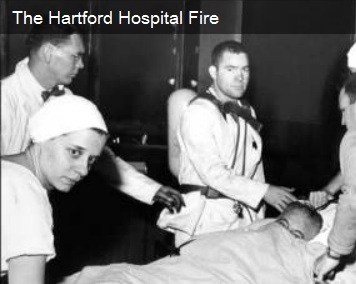December 8th, 2011, was the 50-year anniversary of a fire at Hartford Hospital which caused the death of 16 patients, staff, and visitors, and resulted in many important changes to code requirements for hospital construction. Connecticut Public Television has just released a video about the tragedy and the resulting code changes. Other than the statement “all patient room doors must have positively latching hinges,” it’s a great piece.
For the record, patient room doors are required to have positive latches, not roller latches which were once common in hospitals because of convenience. Because they will not keep the door latched against the pressure of a fire, roller latches are no longer allowed and all patient room doors were required to be retrofitted with positive latching hardware by March 2006.
You need to login or register to bookmark/favorite this content.






Lori…
Great post. Very moving story on the Hartford Hospital fire. It was a terrible loss and tragedy to everyone involved, and it did lead to many changes in fire safety codes across the nation.
Interesting points in the video: The NFPA 101 Life Safety Code (as we call it today) was not a mandatory code in those days. It wasn’t until President Johnson signed into law the Medicare/Medicaid reform act of 1965 that established the Health Care Finance Adminsitration (HCFA), which is the fore-runner of the Centers for Medicare/Medicaid Service (CMS). Without the LSC, (and as the video pointed out) there were no requirements for fire drills, positive latching corridor doors, elevator recall, limitations on trash and linen chutes, and multiple exits from fire compartments. The LSC was a voluntary standard in those days.
One point I would like to correct that the video said: Although the Hartford Hospital fire was devastating and tragic, it was not the nation’s worst hospital fire to date. The worst fires in hospitals up to that date were:
*The Cleveland Clinic, Cleveland OH May 15, 1929 125 lives lost
*St. Anthony’s Hospital, Effingham, IL April 4, 1949 77 lives lost (This fire was also started in the trash chutes)
*St. Elizabeth’s Mercy Hospital, Davenport, IA January 7, 1950 41 lives lost
Today, many people complain about the restrictive requirements that codes and standards bring to hospitals. I thank you Lori, for keeping the memory alive as to why we have these fire safety codes. Well done.
Thanks Brad – I’m surprised that the “worst hospital fire to date” made it past the fact-checkers!
Great video….thanks for sharing!